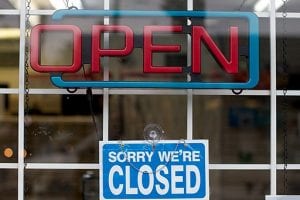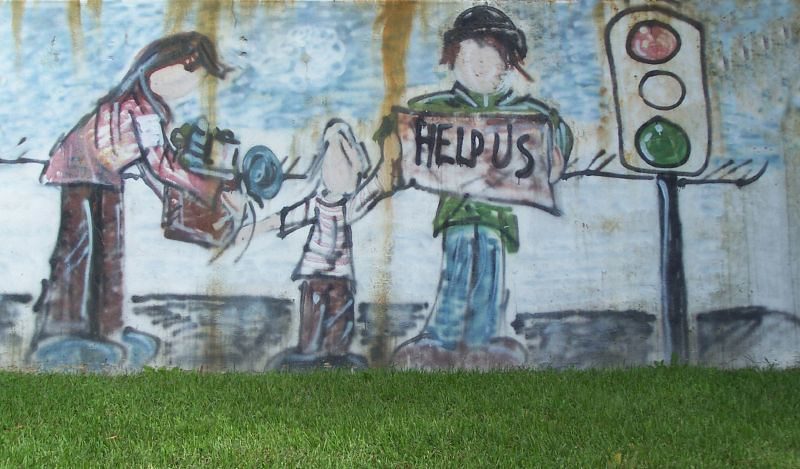
Photo by Alan Levine via flickr, CC by 2.0
In the weeks leading up to the passage of the latest COVID Relief Bill, Congressional Democrats were on cable news making the case that Community Development Financial Institutions (CDFIs) should participate in the Payroll Protection Program (PPP). The legislation gives $30 billion to “Community Financial Institutions” to participate in PPP, including CDFIs. That’s good news for them and their small-business customers, right? Not even close.
As Brett Theodos, Jorge Gonzalez, and Brady Maxwell write in “Opportunity Lost with the Expansion of the Paycheck Protection Program,” the $30 billion set-aside “also includes banks with assets under $10 billion, despite the fact that 97 percent of all banks fall below this threshold.” What happened? Simple: PPP is an expansion of a pre-existing program created for banks and credit unions. PPP offers virtually nothing to nonprofit small-business lenders, and by extension, low-income and underserved small businesses.
There has been a great deal of confusion about how PPP works. In fact, no new funding has been appropriated by the federal government. Instead, the government will guarantee loans made by bank and nonbank lenders using their own capital. Essentially, the PPP is a modified version of the SBA 7(a) program, which provides up to an 85 percent guarantee to participating lenders. Under PPP, the guarantee is raised to 100 percent, and fees and collateral requirements are waived.
CDFIs serve individuals and communities that most conventional lenders cannot—with the goal of bringing CDFI customers into the mainstream economy as bank customers, homeowners and/or entrepreneurs. But the deck is stacked against them on the PPP.
- In general, CDFIs don’t have significant experience with SBA guarantee programs. There are approximately 350 CDFIs that are micro- and small-business lenders, and a majority of those are very small organizations. Of these, only about one-third also offer SBA-guaranteed loans, so they will resume the processing of PPP loans for their existing borrowers.
- Small Business CDFIs are not depository institutions. Banks have greater capital liquidity—liquid assets to fund loans and investments and to repay investors. Banks can borrow at the Federal Reserve’s “discount window” when they are experiencing short-term liquidity shortfalls and need a quick cash infusion. CDFIs rely on capital from the CDFI Fund (stick a pin in that), and other government agencies, financial institutions, and foundations.
But there’s more to it than just CDFIs. The $30 billion set aside for “Community Financial Institutions” also includes the over 140 nonprofit lenders participating in SBA Microloan Intermediary Program. Nonprofit mission-driven lenders, they borrow money from the SBA at 0 percent and make direct, not guaranteed, loans up to $50,000 to low-income and borrowers of color. But many are neither CDFIs nor SBA guaranteed lenders. But they got a foot in the door and can start enrolling borrowers on Monday morning, right? Wrong.
As the banks get out of the starting gate, SBA microlenders are stuck in neutral. The reason being SBA Form 3507. That’s the Lender Agreement for Non-Bank and Non-Insured Depository Institution Lenders. In signing this form, the applicant must attest that it “has originated, maintained, and serviced more than $50 million in business loans or other commercial financial receivables during a consecutive 12-month period in the past 36 months.” A modification has been requested by the SBA to the Treasury but there hasn’t been any movement on the requirement. SBA microlenders, can I place you and your customers on hold?
While the door to PPP has essentially been slammed shut to small-business CDFIs and microlenders, their brothers and sisters running CDFI credit unions and depository institutions led by people of color fare much better. As of Nov. 31, 2017, 304 (28 percent) of CDFIs are credit unions and 137 (12 percent) are banks or thrifts. Like banks, they have greater capital liquidity. Also, the majority of CDFI credit unions have been designated as “low-income” credit unions by the National Credit Union Administration (NCUA). This designation allows these institutions to accept nonmember deposits and secondary capital, which is an uninsured, fully subordinated debt instrument that enhances a credit union’s net worth.
We’re also rooting for depositories led by people of color who are well-positioned to respond to the economic inequities exacerbated by COVID-19. Historically, Black-owned banks provide the majority of business loans to churches, small businesses, and community organizations in African-American communities. According to a 2019 FDIC report, Minority Depository Institutions (MDIs), continue to originate a higher share of SBA 7(a) guaranteed loans to borrowers in LMI tracts than non-MDIs. Regrettably, there is not one bank owned by a person of color among the 100 most active SBA 7(a) lenders.
The double-bottom line? CDFIs fill a niche by providing capital and credit to individuals and areas that are often overlooked by traditional financial institutions. Anyone claiming that equity and inclusiveness are guiding principles of the PPP should meet with small-business owned by people of color who are shut out from applying because they don’t have existing relationships with banks.
Amid a national emergency, CDFIs and other nonprofit lenders shouldn’t have to compete against the banks for a sliver of the full faith and credit of the United States. Recently, a coalition of CDFIs and small-business advocates—led by people of color—and other industry leaders have called for a set-aside of $10 billion in PPP funding for use only by CDFIs and Minority Depository Institutions (MDIs). That’s great, provided there would be a carve-out for non-depository CDFIs.
However, that won’t address the liquidity issue. Another option is for Congress to pass a supplemental appropriation to the CDFI Fund to provide 0 percent capital to CDFIs so they can make loans not only to their borrowers, but new customers, as well. This would help CDFIs owned by people of color, who are undercapitalized compared to white-led CDFIs, by a 6:1 ratio. And remember, CDFIs are relationship-based lenders, and pair those loans with technical assistance to help create sustainable small businesses. Banks are prohibited from doing that. And even without a government guarantee, there are ways to insulate CDFIs from the risk associated with these higher risk loans.
In a statement released on April 20, the NAACP, in concert with the African American Alliance of CDFI CEOs, National Association of Latino Community Asset Builders, First Nations Oweesta Corporation, and the Expanding Black Business Credit Initiative, called on Congress to, among other things, appropriate $1 billion to the CDFI Fund to support rapid response to the economic conditions created by COVID-19. Of that, $833 million would be allocated to CDFIs led by people of color. This is for loan capital, not carve outs for loan guarantees.
Crazy idea? Well, there is a precedent, something called The American Recovery and Reinvestment Act (ARRA) of 2009. ARRA appropriated an additional $100 million to the CDFI Fund to make awards through the CDFI Program and the Native American CDFI Assistance (NACA) Program. And as mentioned above, CDFIs are undisputedly good at leveraging additional capital from banks and foundations and make more loans.
Allowing CDFIs and other nonprofit community lenders to participate in PPP is like telling your kids you are taking them to Disneyland, but not beyond the parking lot. At the federal level, CDFIs are not being embraced as part of the solution to backstopping the small business community. The real action is happening at the state and local level. Michigan, Wisconsin, and New Jersey are a few of the states that are collaborating with CDFIs to deploy capital and loan guarantees to their businesses. At the local level, local governments, foundations, and yes, financial institutions are coming together to capitalize CDFIs, so they can do what they do best: deliver economic opportunity to everyone.
This post originally appeared on LinkedIn.




Comments